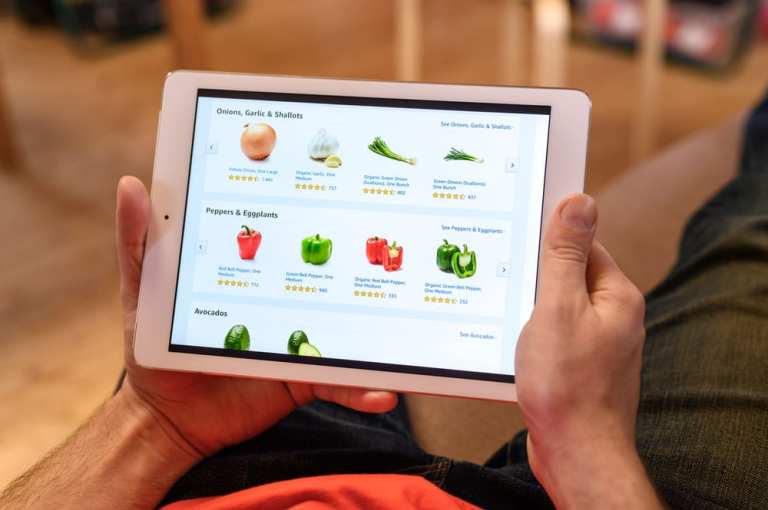Alibaba and its big grocery play have grabbed some global attention this week as the eCommerce giant has invested $3.6 billion for a controlling stake in the “hypermarket” operator Sun Art Retail Group. The deal will give Alibaba a controlling 70.94 percent equity interest in Auchans’ A-RT Retail, which itself owns about a 51 percent equity interest stake in Sun Art.
“As the COVID-19 pandemic is accelerating the digitization of consumer lifestyles and enterprise operations, this commitment to Sun Art serves to strengthen our New Retail vision and serve more consumers with a fully-integrated experience,” said Daniel Zhang, director and CEO of Alibaba.
Alibaba has been an investor in Sun Art since 2017 because the business and its physical footprint fit into Alibaba’s New Retail strategy, launched that same year, to build a robust infrastructure to create opportunities and value in China’s retail sector, according to its CEO.
Since then Alibaba and Auchan have collaborated to layer in omnicommerce functionality at Sun Art stores, of which there are currently 481 hypermarkets and 3 mid-size supermarkets in China. In recent years the firm has consolidated its position as a solid competitor for JD.com, Alibaba’s biggest rival in the grocery segment.
And, reports indicated, Alibaba is only about half done with what observers are calling its “Whole Foods moment” (referencing Amazon’s nearly $14 billion deal for Whole Foods in 2017), with intentions to buy the remainder of the firm after an agreement with shareholders can be worked out. With Alibaba’s coming ownership will come greater integration; Alibaba noted in a release that all physical Sun Art locations in China are integrated with the Alibaba Taoxianda and Tmall supermarket platforms to make one-hour and half-day delivery options possible. Sun Art joints Alibaba’s Freshippo grocery stores in China, which are designed as both in-person and digital shopping fulfillment centers that enable fresh grocery delivery in 30 minutes or less.
But while Aliababa has snapped up all the global grocery attention of late, its move to fold typically low-margin business into its greater omnicommerce ambitions is becoming an increasingly familiar story worldwide as players from all concerns are working to recreate the grocery store in the image of digital for the pandemic period and beyond.
Advertisement: Scroll to Continue
India
As in the Indian eCommerce market across the board is becoming an increasingly competitive space for both foreign and domestic plays, it is unsurprising that the moves to capture what is a highly fragmented grocery environment are becoming more myriad. This week saw India’s Ninjacart, which brings high-tech services including supply chain infrastructure to the country’s produce market, secure new funding from existing investors Walmart and Flipkart Group.
“During the COVID lockdowns, Ninjacart demonstrated agility and innovation by launching a series of initiatives such as apartment delivery, including a ‘Farm to Fork’ pilot with Flipkart, customer delivery through food delivery apps, ‘Harvest the Farms’ initiative, etc. in a week’s time to help both customers and farmers. Also in an industry-first move, Ninjacart launched ‘FoodPrint’ – a 100 percent traceability platform for its products during the COVID lockdown to improve the food safety,” Flipkart noted in a statement.
The statement went on to call out Ninjacart’s many innovations in closing the last mile of the supply chain delivery network, making it possible to truly build delivery solutions for consumers at scale when it comes to fresh goods.
“The eGrocery market in India has seen tremendous growth over the past several months as people have increasingly taken to ordering groceries and fresh produce online. At the Flipkart Group, we are focused on ensuring that we continue to work toward developing new and innovative ways to meet our customers’ needs in this space,” Kalyan Krishnamurthy, chief executive of Flipkart Group, further said, noting Ninjacart was an investment in ensuring the produce being offering up for delivery is both delicious for their customer to eat and lucrative for their local farmers to sell.”
Also making moves in an increasingly crowded Indian digital commerce market this week, new reports indicate that Indian software conglomerate Tata group is in talks to buy a stake in online grocer BigBasket.
The move, according to analysts, indicates that Tata is looking to build a super app for Indian consumers — and is looking to place online grocery capability centrally within it. It’s an understandable goal, considering the estimated $0.5 trillion value of the Indian grocery market today — and the expectations that it will double over the coming decade. But according to most experts, profitably cracking it is a challenge.
“Even as the massive size of the Indian online grocery retailing market is a magnet, it is also the toughest in terms of making money. The challenges for eCommerce still include low per capita income, which has meant that scaling up is always challenging. At the bottom of the pyramid, the value of the ticket size is low,” analyst Govind Shrikhande told Livemint.
But the pandemic has powered a massive shift to online grocery shopping, with use doubling and basket sizes steadily increasing.
“There will be consumer stickiness [if] and when COVID starts to wear off. That’s because consumer confidence has been dented, and they would be cautious even after a vaccine is out. So a lot of changes in terms of increase in online shopping seen during COVID are for long-term,” said Harsha Razdan, partner and head of consumer markets and internet business at KPMG in India.
Which means the race will be to the swift — and digitally enabled. Super app builders and global giants are crowding into the space. Because online grocery is a difficult business in the sub-continent, according to the experts — but also one that is growing too quickly for any player to pass up.
What’s Next
As has been the case across verticals, everybody wants to rule the grocery world as consumers’ comfort continues to increase and they become more willing to let go of buying their groceries in person in a store, an experience that is becoming a more distant memory. While the data clearly demonstrates it happening in the U.S., a step out with a look at the wider world shows what the bigger names in commerce globally are attempting to set up to stay competitive. It gets pretty clear that digitized grocery isn’t a local phenomenon so much as the grocery’s future on a global scale.




